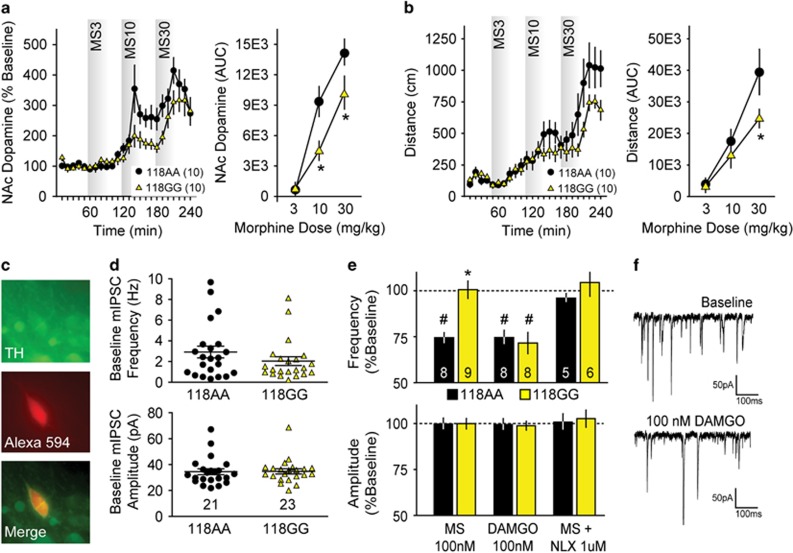Figure 2.
Mesolimbic responses to opioids in h/mOPRM1-118AA and 118GG mice. (a and b) Effects of morphine (3–30 mg/kg i.p.) on dopamine release in the nucleus accumbens and locomotor activity in 118AA (n=10) and 118GG (n=10) mice, as determined by area under the curve (AUC) analysis. (c) Alexa Fluor 594 dye-filled neuron stained for tyrosine hydroxylase (TH). (d) Baseline frequency (Hz) and amplitude (pA) of miniature inhibitory postsynaptic currents (mIPSCs) in OPRM1-118AA (black circles; n=21) and 118GG (yellow triangles; n=23) mouse dopaminergic neurons in the ventral tegmental area (VTA). (e) Effects of bath-applied DAMGO (100 nM), morphine (100 nM), and morphine (100 nM) following naloxone (NLX) preapplication (1 μM) on normalized mIPSC frequency and amplitude in 118AA (black bars; n=8, 8, and 5, respectively) and 118GG (yellow bars; n=9, 8, and 6, respectively) dopaminergic neurons. (f) Representative traces showing mIPSCs recorded in the presence of 500 nM tetrodotoxin before and after DAMGO (100 nM) application in 118AA VTA slices. Values represent mean±SEM. *p<0.05 vs h/mOPRM1-118AA; #p<0.05 vs vehicle or baseline.

